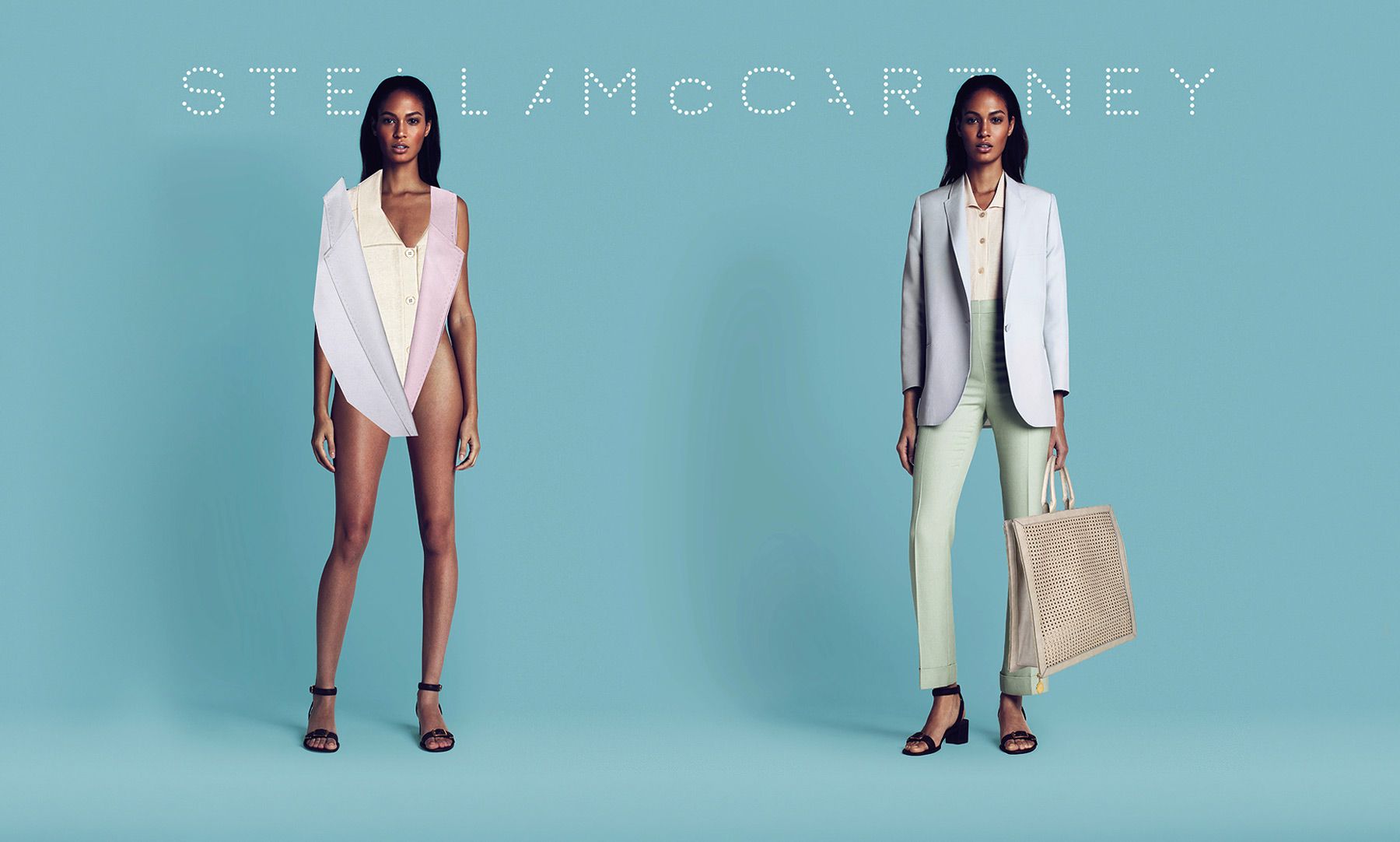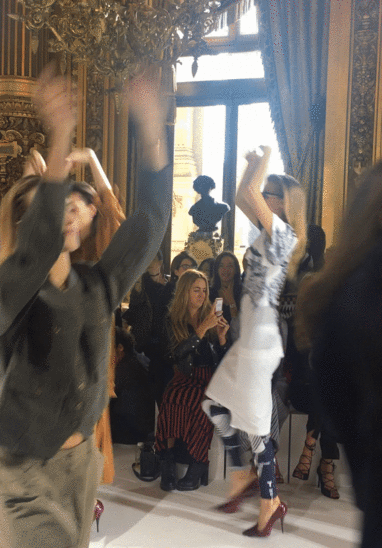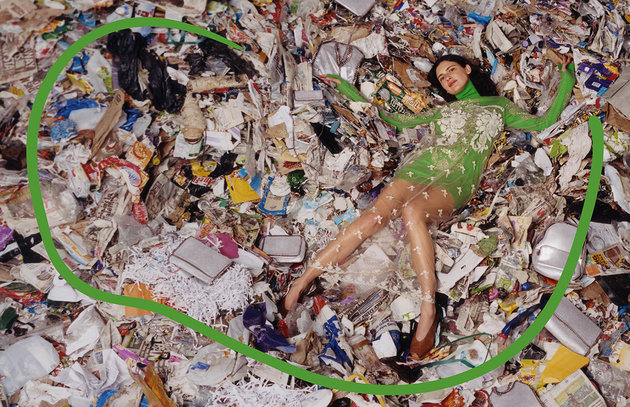Stella McCartney - Elevating The Status Of Sustainable Fashion To The Higher Echelons Of Haute Couture
Joan Smalls for Stella McCartney. Spring 2011 campaign. (credit: Maert & Marcus)
While the cruelty-free/vegan/sustainability agenda may seem like a new emerging trend to many, Stella McCartney OBE (Officer of the Most Excellent Order of the British Empire) – the woman and the brand alike – has lived and breathed these principles throughout her and her brand’s lifetime and continues to push the boundaries of responsible design in luxury fashion.
Born in London to rather a famous set of parents, Stella, spent some of her early life on tour with her father, Paul McCartney of The Beatles and mother Linda, also a musician, photographer and animal rights’ activist who led a vegetarian lifestyle and inspired the same principles in her children. It is the combination of her childhood spent growing up on an organic farm, her training in suit-making with a tailor at Saville Row and in haute couture at Christian Lacroix, combined with her love for animals and the environment that gives the Stella McCartney brand its special edge – making environmentally responsible and sustainable principles not only wearable but easy, fun and sexy. The self-described head-to-toer practices what she preaches in still eating no meat, often wearing her own clothing (as well as having her children wear it too) and putting much personal effort into researching new materials to find alternatives to environmentally harmful and animal products in fashion.
Kate Moss & Stella McCartney. Central St. Martins college graduate fashion show in 1995. (credit: THOMAS COEX/AFP/Getty Images)
But before the name McCartney was as respected in fashion as it was in music, Stella did her best to hide her famous father’s identity - even going as far as calling herself ‘Stella Martin’ while studying fashion at Central St. Martin’s College in London to prevent fellow students knowing her real surname. It took a good number of years of proving herself to get people to stop attributing any success of hers to her parents and their connections. She went on to replace Karl Lagerfeld as head designer at fashion house Chloe two years after her infamous graduate fashion show which featured her good friends (who happened to be the top models of the day); such icons as Kate Moss, Naomi Campbell, and Yasmin LeBon. Both those major events in her career were received with comments that her name had more to do with them than her own merit.
After much success and respect for her work at Chloe though, her eponymous brand formed in partnership with Kering, who own Gucci among other luxury brands. The Stella McCartney brand famously does not use leather or fur in any of its products, which has proved more than a little challenging, particularly in a business driven by the sale of luxury accessories such as bags and shoes.
The challenge, she has said, is to find alternatives to the materials that still look and feel like them. The brand has succeeded in this with iconic pieces such as the Falabella Bag and the Elyse and other platform shoes, two examples of exemplary design that have become wardrobe staples for many.
Aside from her vegetarian diet and her environmentally-conscious lifestyle choices (spending weekends with her family in the country riding horses and growing her own kale are parts of ordinary life for her household) the same principles are of course translated into her business. Sustainable wood and lighting for her stores, the use of organic cotton, vegan leather and recycled shoe soles among other responsibly-sourced materials for her products and constant re-education and improvement on their practices. Recently for example, the brand has moved to only using viscose sourced from sustainable woods in Sweden, which don’t contribute to mass deforestation otherwise caused by its production.
It is estimated that 120 million trees are cut down every year from endangered forests specifically for use in the fashion industry – trees that are valuable to the earth as they are vital for keeping the global climate stable by absorbing carbon. Many other brands are wising up to this and also looking to source their raw materials more responsibly. Ralph Lauren is even moving to publish its sourcing guidelines and implement new purchasing policies later this year.
More than just the fact that droves of animals are killed each year for use as fashion, using materials such as viscose and simple-seeming processes such as dyeing fabrics or manufacturing t-shirts also pose a huge strain on the environment. The world of luxury fashion contributes massively to this global impact of waste, high water consumption, and pollution; much of which can be avoided, or at least reduced, by choosing to produce more mindfully. Through spreading the awareness of these facts, demonstrating success in responsible production and still maintaining a profitable business and brand in the cut-throat luxury industry, Stella McCartney has emerged as a pioneer in the fight for a luxury goods and fashion industry that is more critical with itself regarding its responsibility towards the environment. Despite facing some ridicule, in the beginning, McCartney maintains that she was and still is interested in finding and sharing information on low-impact and sustainable practices in production rather than preaching to anyone.
Now comes a new opportunity to do that with Parley for the Oceans, an organization dedicated to educating people on the various threats our oceans and marine life are facing globally. McCartney has worked with the group before on her Adidas by Stella McCartney shoe collaboration and is now moving forward using their newly-developed material called ocean fiber – a yarn fiber made up of threads from fishing nets, bottles and various other plastic debris polluting the oceans. This tangible replacement for polyester on luxury bags, shoes and apparel may be a step in making people more aware and interested in both alternative materials and the plight of the oceans across the world. More than that, the appeal is that consumers are unlikely to even realize they are touching and wearing products incorporating recycled plastic unless they read the label. As she told the New York Times, “To take something that is destructive and turn it into something that’s sexy and cool, how can that not be luxury?”. Parley founder, Cyrill Gutsch, has expressed his excitement for this joint venture with Stella McCartney and his hope that it will encourage and set a precedent for plastic debris from the ocean to be standardized and used in more and more luxe goods.
Parley has collaborated with Adidas on their own separate projects too and McCartney has spoken of how much she values the work of the sports apparel industry in making such major strides in sustainable design as compared to the luxury goods and greater fashion industries, as well as their access to the cutting-edge technologies that make it possible. She cites working on the 2016 Olympics Team Great Britain uniforms and the shoe collaboration with Adidas as being inspiring and enlightening in the ways she was able to explore new and high-tech design with fabrics as well as production methods.
Despite her commitment to working and designing fur and leather-free, McCartney has made no secret of the challenges the brand faces to find alternatives to either replace or mimic the characteristics of these well-loved and, let’s face it, desirable materials in her products. The brand has had trouble completely doing away with some wools and silks in its products, but another innovation may well be the answer to this and a step in the right direction. Enter Bolt Threads, a California-based sustainable biotechnology startup who have developed their own signature vegan silk that uses yeast as a base and spider silk as its inspiration, called Microsilk. This joint venture is set to start off with a one-of-a-kind woven silk shift dress – made entirely out of Bolt’s golden Microsilk yarn - to be debuted at the upcoming ‘Items: Is Fashion Modern?’ exhibition at the New York Museum of Modern Art in October. This is Bolt’s first collaboration with a designer, although the firm has produced a necktie in the past. McCartney has expressed her excitement saying of the partnership how much of a game-changer Microsilk is in her life and her work.
Her work with the brand is certainly set to continue to grow from strength to strength with a recently introduced menswear line to add to the womenswear, children’s clothing, accessories and fragrance lines, all with the same ethos as always. Her latest Autumn/Winter campaign, which includes a short film, sees models posing in a landfill in Scotland to represent the state of our planet and the waste caused by fast fashion among other industries. Of the collaboration with artist Urs Fischer and photographer Harley Weir, McCartney says the aim was to “portray who we want to be and how we carry ourselves, our attitude and our collective path.”
With each stride in a sustainable approach to all these various product categories and the proof that it can be done well and profitably, the luxury fashion as well as industries across the board, will have fewer and fewer excuses to push aside their responsibilities to the planet and ultimately to all its inhabitants.
































